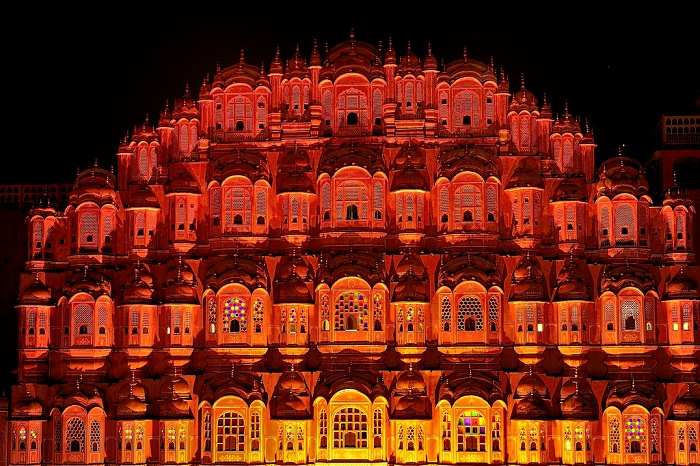
The gigantic building of Hawa Mahal remains at the crossing point of the primary street in Jaipur, Badi Chaupad and was worked by Maharaja Sawai Pratap Singh in the year 1799. Hawa Mahal gets its name from its special structure, which is a work of little windows that enabled cool breeze to enter the royal residence and henceforth kept the castle happy with during the blistering summer months. The fundamental explanation for the royal residence's development was to permit the ladies of the regal house to watch the celebrations on the lanes while being inconspicuous from the outside similar to the custom of the land. It is found ideal on the edge of the City Palace Jaipur and stretches out ideal to the 'zenana'.
Hawa Mahal is a structure made of red and pink sandstone and has a pyramidal structure which nearly looks like a crown. It has been adorned with 953 minor windows, otherwise called 'Jharokhas' and decorated with beautiful latticework. From inside, the Hawa Mahal castle depends on five stories every one of which has a particularly designed chamber. An enchanting wellspring invites you inside the primary castle, from whereon you can advance up to the various floors. The highest point of the royal residence offers a splendid perspective on the City Palace, Jantar Mantar and the ever-occupied Siredeori Bazar. There is a little gallery also which holds some rich relics and smaller than expected works of art.
Hawa Mahal was worked in 1799 by Maharaja Sawai Pratap Singh as a continuation of the imperial City Palace and was structured by Lal Chand Ustad as Krishna's crown. Back then, the Rajputs used to pursue the Purdah framework and the imperial ladies didn't show up before people in general. As they wished to pursue the everyday occasions, the Hawa Mahal was worked with very little windows and screened overhangs to give a feeling of opportunity among the ladies.
Hawa Mahal, Jaipur
![Hawa Mahal, Jaipur]() Reviewed by rathore
on
September 23, 2019
Rating:
Reviewed by rathore
on
September 23, 2019
Rating:

No comments: